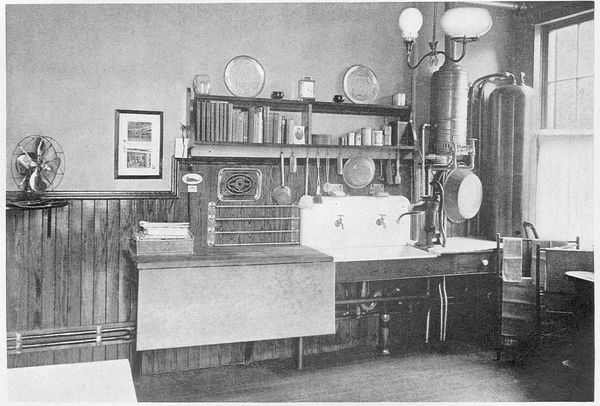In 1899, the Hoosier Cabinet Company sprung up with the amazing idea of putting EVERYTHING needed to cook in to one standalone cabinet that could be set next to a stove and the sink. An early ad for the Hoosier Cabinet advertises how the cabinet saves miles of steps that were formerly between the barn, pantry, shed, and well. It was a powerful idea that got ahead of the cultural shift that moved cooking from a job to something that could be a pleasure.

Though there are few remaining cabinets from those early days of the Hoosier Cabinet Company, these photos above give you a sense of what some of the early models looked like. Over the years, these cabinets (and clones) would show up in households across America.

The Hoosier evolved quickly over the coming years and so did the ads. The cabinets even began coming with pre-installed containers and recipes in the doors!
Before the Hoosiers reached mass adoption, various companies came together to promote an idea of an integrated, efficient kitchen. The following two photos from the 1906 edition of Craftsman Magazine show a view of a model kitchen. Here we see one side of a model kitchen where the large sink and preparation area is set up with some basic storage above it. During this time, the sink was typically a large porcelain monster like the one you see here. This is why we have the phrase “Everything but the Kitchen Sink!” because it was such a heavy monstrosity.

Another image from Craftsman Magazine shows the cooking area and pot/pan storage. This picture gives you a great sense of why the Hoosier cabinet caught on so well – it was a total bear to have all those pots and pans hanging from ceilings and shelves! These photos also give you a sense of how there started to be a ‘flow’ to kitchen design. They were only missing one thing, though: Cabinets!

From 1900-1920, many families were choosing to stay in smaller homes, and this meant that things like the Hoosier (And Cabinets!) became more important, because they simply didn’t have space for all of those wall hangings. Beyond this, as families grew, their need for various types and quantity of dishes grew, so the cabinets became even more necessary. Here we see Margaret Ober, a singer with the The Metropolitan Opera, in 1914 showing off a rib roast she’s made in her kitchen. Look at all the cabinets!

SKM: below-content placeholderWhizzco for DOT


